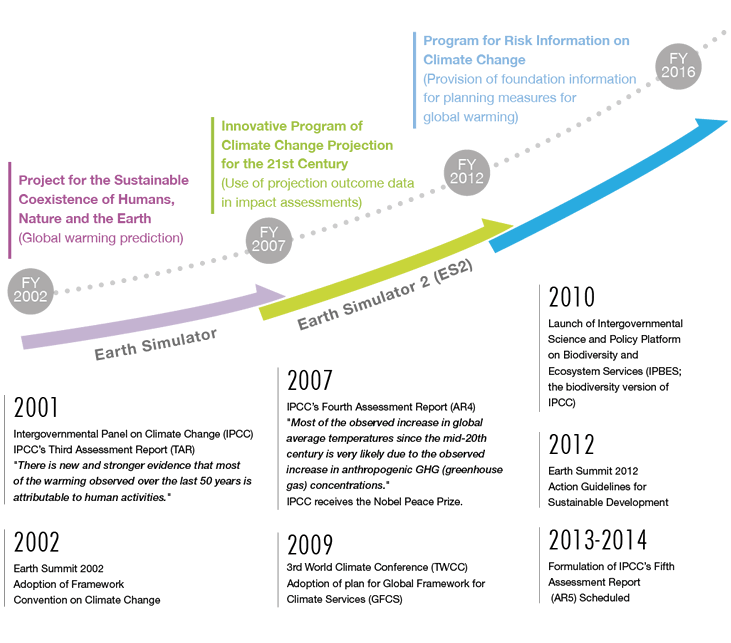
On the Japanese archipelago which is mountainous and long north to south, there is significant variation among the regions in temperature, precipitation, and wind. Since the islands are surrounded by the ocean, they are often hit by typhoons during the summer and fall. Moreover in recent years, extreme weather phenomena have become frequent occurrences, including concentrated heavy rainfall, unusually high temperatures near 40 degrees Celsius (104 degrees Fahrenheit), and tornadoes strong enough to destroy houses. These types of abnormal weather phenomena threaten our daily lives and are capable of causing immense damage to society and the economy.
The Program for Risk Information on Climate Change (SOUSEI) carries on the work of the Innovative Program of Climate Change Projection for the 21st Century (KAKUSHIN) (FY2007-FY2011). The aim of this program is to generate information to evaluate the probability of the occurrence of the above-mentioned extreme climate changes and the risk of various scenarios, disasters, damage, etc., and to play a role in risk management.
This project began in FY2012 and will continue for five years. The project’s specific research is divided into five themes which are being pursued concurrently, as follow. Theme A: Prediction and diagnosis of imminent global climate change, Theme B: Climate change projection contributing to stabilization target setting, Theme C: Development of basic technology for risk information on climate change, Theme D: Precise impact assessments on climate change, and Theme E: Promotion for climate change research and linkage coordination.
By developing the highest level of research technology in the world, we expect to play a role in climate change risk prediction not only in Japan but also in countries around the world including Southeast Asia.

